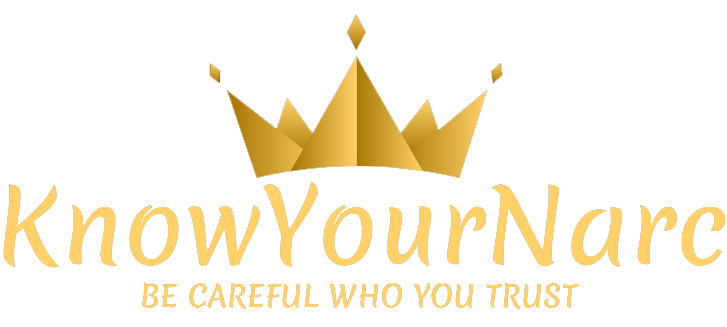Have you ever found yourself caught in the middle of a conversation that feels more like a strategic game than a genuine chat? If so, you might have encountered a tricky communication tactic called triangulation—especially common when dealing with narcissistic personalities. Don’t worry, though! In this friendly guide, we’re going to break down what triangulation is, how it shows up in narcissistic talk, and most importantly, how you can spot it with confidence. Whether you’re looking to protect your peace or simply understand the dynamics at play, this article is here to help you navigate the conversation maze with clarity and calm. Let’s dive in!
Table of Contents
- Understanding Triangulation and Its Role in Narcissistic Conversations
- How to Recognize Common Triangulation Tactics in Everyday Talk
- Why Triangulation Hurts Relationships and What You Can Do About It
- Practical Steps to Protect Yourself and Keep Communication Clear
- The Conclusion
Understanding Triangulation and Its Role in Narcissistic Conversations
When dealing with narcissistic conversations, one subtle yet powerful tactic you might encounter is the use of a third party to manipulate the dynamic—this is known as triangulation. Instead of addressing issues directly, a narcissist often pulls another person into the conversation to create confusion, shift blame, or sow discord. This tactic not only diverts attention but also gives them control over the narrative, making it difficult for you to confront concerns head-on. Understanding this pattern is key to reclaiming your voice and maintaining healthy boundaries.
To recognize if you’re being drawn into this web, watch for these common signs:
- Sudden involvement of an unrelated person in a conversation that originally involved just you and the narcissist.
- Messages or comments relayed indirectly through this third party, often distorted or exaggerated.
- Feelings of confusion or being caught in the middle as the narcissist manipulates perspectives to their advantage.
Being aware of these tactics empowers you to respond calmly, stay centered, and avoid getting entangled in needless drama. Remember, it’s perfectly okay to set limits on which conversations you engage with and who you include in them.
How to Recognize Common Triangulation Tactics in Everyday Talk
When navigating conversations, especially with someone who might use narcissistic tactics, it’s helpful to stay alert to subtle signs that indicate triangulation. One common red flag is when a person consistently plays one person against another, often by sharing selective information or gossip to create tension or competition. You might notice phrases like, “I told them, but I haven’t told you yet,” or overhearing them comparing your actions unfavorably with someone else’s. These comments are designed to spark insecurity or loyalty conflicts without addressing issues directly. Recognizing these tactics can prevent you from getting caught in unnecessary drama and help you maintain clear boundaries.
Another giveaway is the tendency to avoid direct communication, instead choosing to involve a third party to pass messages or express grievances. This creates confusion and keeps the real problem out of sight and out of reach. You might find yourself being told what someone else “thinks” or “feels” instead of hearing it from the source, which leads to misunderstandings and misinterpretations. Watch for instances where discussions shift quickly, or stories are repeated with slight variations depending on who’s involved. These are classic triangulation moves aimed at fragmenting the dialogue and controlling the narrative.
Why Triangulation Hurts Relationships and What You Can Do About It
When someone brings a third party into a conflict or tension that should be handled between two people, it often creates confusion and resentment. This strategy, known as triangulation, can lead to miscommunication as the original issues get distorted or ignored. Instead of fostering honest dialogue, it throws the conversation off track, making genuine resolution feel impossible. You may find yourself feeling caught in the middle, manipulated, or used as a messenger—none of which help build trust or understanding.
To protect your relationships from the damaging effects of triangulation, it’s important to set clear boundaries and encourage direct communication. Here are some friendly tips to help you navigate and defuse triangulation:
- Prompt everyone involved to speak honestly to each other without involving others unnecessarily.
- Recognize when you’re being pulled into a triangle and gently steer the conversation back to the main parties.
- Practice empathy but don’t take on roles that aren’t yours, like mediator or messenger, without consent.
- Keep your own emotions in check to avoid escalating feelings or becoming an unwilling pawn.
Practical Steps to Protect Yourself and Keep Communication Clear
When navigating conversations where triangulation might be at play, it’s crucial to set clear boundaries and anchor your words in fact. Start by focusing on direct communication — engaging with the person involved rather than relying on intermediaries. This approach reduces the chance for misinterpretation or manipulation. If you notice someone trying to drag another person into your exchange, gently but firmly redirect the conversation back to the people involved. Also, don’t hesitate to pause and reflect before responding, as impulsive replies can often play into the manipulator’s hands.
Another valuable tactic is to keep your communication transparent and documented when appropriate—whether that’s through emails or written summaries of verbal agreements. This helps maintain clarity and provides a reference should the narrative become twisted. Additionally, practice active listening while asking open-ended questions; this can reveal hidden motives and break the cycle of triangulation by clarifying intentions. Remember, your goal is to foster honest, two-way dialogue that cuts through the noise and keeps your peace intact.
The Conclusion
Thanks for sticking with me through this guide on spotting triangulation in narcissistic talk! Remember, recognizing these patterns is the first step towards protecting your peace and setting healthy boundaries. It might feel tricky at first, but with a little practice, you’ll get better at tuning into those subtle cues. If you ever find yourself doubting your gut, just take a breath and trust your instincts—they’re usually spot on. And hey, you’re definitely not alone on this journey. Keep this guide handy, share it with friends who might need it, and don’t hesitate to reach out for support when you need it. Here’s to clearer communication and healthier relationships ahead!

